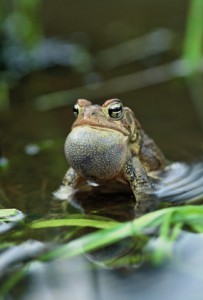The storms of the previous day had moved eastward, leaving in their wake flooded farm fields and saturated roadside wetlands. At dusk, we loaded the Ford Escort wagon and headed south. We bumped along the maze of farm roads intent upon listening for croaks and snores in the night. At one roadside wetland, I heard my first congress of Spadefoot toads. The sound was deafening, invoking everything that a “congress of snoring toads” brings to mind. Around the corner, in a low spot of a corn field, a lone Spadefoot toad called for a mate; he was joined by a rather enthusiastic Copes Gray tree frog and several chorus frogs. The congress down the road provided a rolling bass to these more melodic anurans.
Wetlands exist in many different shapes and sizes and in many different geographies: coastal margins, mountain valleys, beaches and rocky shores, estuarine wetlands where tidal saltwater and freshwater mix, and inland wetlands. Some of them are ephemeral, some of them permanent. Wetlands serve many different functions, from providing habitat and food for plants and animals to offering protection from floods and maintaining water quality. One acre of one-foot deep wetland is estimated to hold 330,000 gallons of water. Coastal wetlands are important for reducing storm erosion by decreasing tidal surge and buffering the wind. In the US alone, this benefit has an estimated value of $23.2 billion dollars each year.
Continue reading “Wetlands, Water Quality and Rapid Assays”
